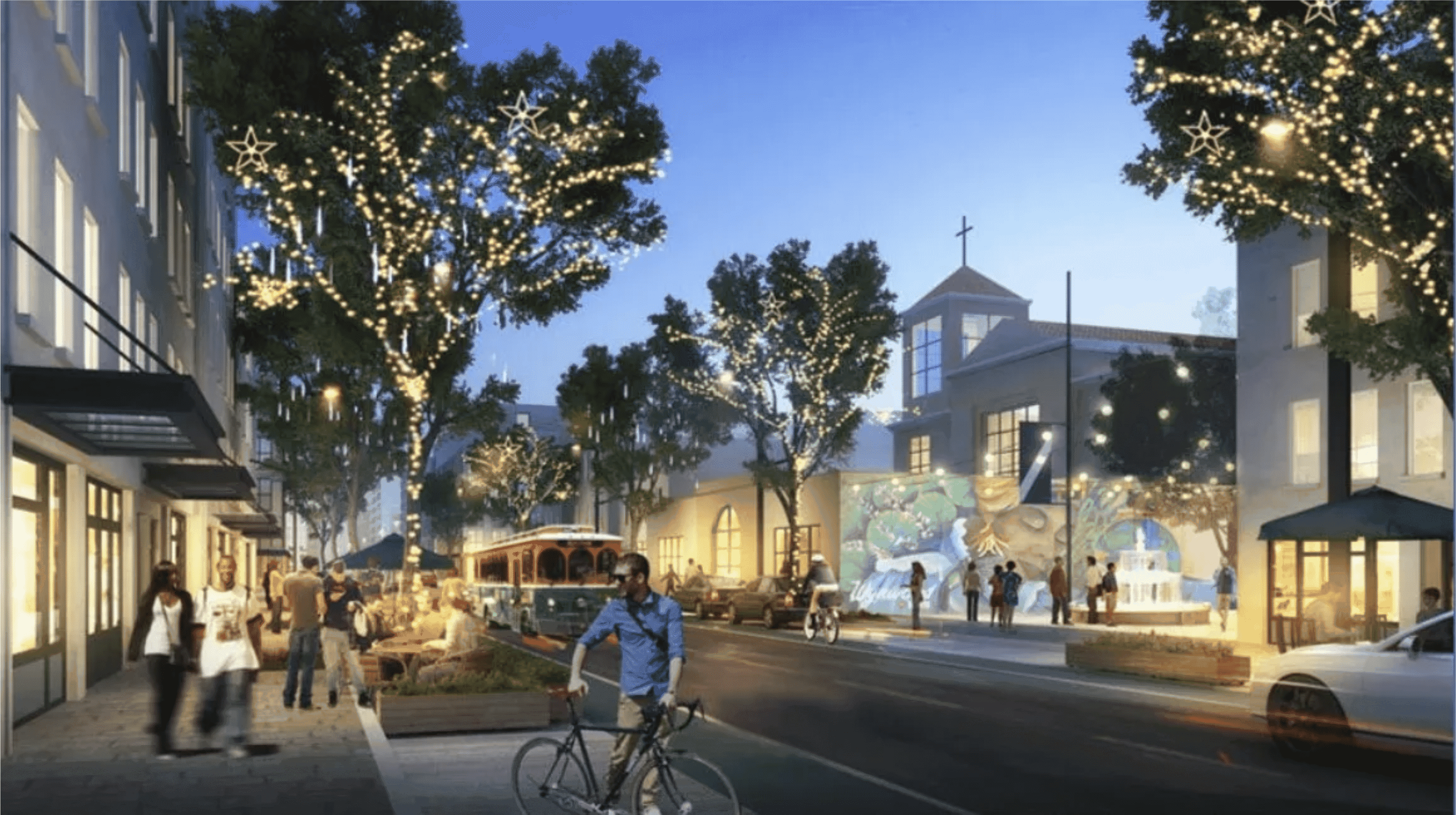The City of Miami commission has passed on first reading an ordinance to increase the residential density in the Wynwood Norte area. Known as Little San Juan from the 1950s through the ’70s, the zone was designated a Neighborhood Revitalization District, or NRD-2, by the commission in March 2021. It’s bordered by I-95 to the west and North Miami Avenue to the east, and Northwest 29th Street to the south and I-195 to the north.
Wynwood Norte has seen a significant decline in population over the past few decades. The Wynwood Community Enhancement Association, or Wynwood CEA, was formed in 2018 and spearheaded the community-led vision plan in 2019 that resulted in the district’s creation. Wynwood CEA came before the commission again Oct. 13 to increase the residential density and encourage community growth.
“Despite the neighborhood’s ideal location and having an elementary, middle and high school located in the neighborhood walkable to residents, most of the schools are significantly under-enrolled, which speaks to the lack of quality housing opportunities for young families,” said Wynwood CEA in a statement to Miami Today.
The NRD-2 text amendments will allow for more dwelling units to be built in the transect four, or T4, zone. The T4 General Urban Zone consists of a primarily residential, mixed-use urban fabric through a range of building types, including townhouses, small apartment buildings, live/work units, and bungalow courts. Under the Miami 21 code as adopted in 2018, the density was limited to 36 dwellings per acre. Under the new text, removing the lot size density calculation would maximize building and allow for 150 units per acre.
The Wynwood CEA’s mission is to provide a unified voice for neighborhood improvements and enhance the quality of life for current and future residents. A primary goal of their community vision plan is to restore and grow the neighborhood’s housing stock and create a new mix of housing options attainable to working families.
“It’s all connected. The neighborhood needs more quality housing options and more foot traffic to support local businesses on Northwest Second Avenue and other commercial corridors,” said Yoni Bornstein, president of Wynwood CEA.
The text amendments approved by the city commission Oct. 13 apply to small and medium-sized lots in the T4 zone to encourage developers to incorporate mixed-income units for working families.
“Specifically, the NRD-2 provides developers with an additional story for residential buildings that incorporate 20% of dwelling units for households earning below 100% Area Median Income,” Wynwood CEA said. “Stakeholders and city officials hope by allowing more flexibility for density but keeping the height to three or four stories, the neighborhood will see infill development that is tailored to the community’s needs.”
After the city’s planning and zoning department initially recommended denial, it updated the decision to approval with modifications to the architectural standards that stipulate newly constructed buildings resemble the character of the neighborhood.
Steven Wernick, attorney and managing partner of Wernick & Co., serves as pro bono counsel for the Wynwood CEA and spoke on behalf of the association about balancing the need for more housing while maintaining Wynwood Norte’s unique features. “Along with the T4 density standards, the legislation was amended to require that all newly constructed buildings within NRD-2 boundaries provide distinct façade and roof treatments compatible with the neighborhood’s existing residential character,” said Mr. Wernick.
The Wynwood CEA supports the commission’s decision to adopt the amendment and says they are continuing to work with commission Chairwoman Christine King, who sponsored the proposal, and city staff to continue implementation of the community vision plan. Their vision includes upgrades to the parks and open space, street lighting and appointments to an advisory committee that was established to make recommendations for allocations from the Wynwood Norte Public Benefits Trust Fund, of which 35% must be directed to new and existing affordable housing.
